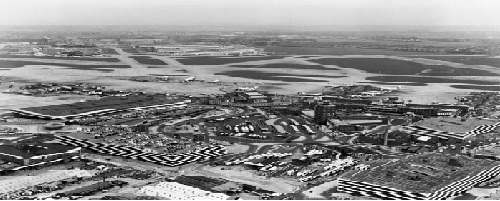
In the mid ’20s, an officer of the Royal Air Force was forced to make an emergency landing in unconventional land. That area of London is what we now call Heathrow Airport. Norman MacMillan’s attempt was successfully completed, and once he was safe, he emphasized the flatness of the land and the convenience of studying its possible conversion into an aerodrome.
At the end of the decade, the Fairey Aviation Company noted MacMillan’s suggestion and decided to buy several acres of land at Heathrow. The owner of the company, Richard Fairey, paid 15,000 pounds to the Vicar of Harmondsworth in exchange for 150 acres.
In the summer of 1930, the airfield was opened with only a grass runway and a basic landing infrastructure. At that time, the infrastructure was not commercially useful. That responsibility fell to Croydon Airport, while Heathrow was used only as a test center for aircrafts.
In the second half of the 30s, the British Aeronautical Society chose Heathrow to host its parties and social events. The celebrations included demonstration flights, aircraft exhibitions … It was a real show of the aviation industry. Meanwhile, in addition to these celebrations, Heathrow also served as a private airfield during the weekends.
However, the advent of World War II showed that the infrastructure could give much more service than that. Thus, in early 1944, the government took control of the airfield for use as a new base for military operations.
The first plane which took off from the new Heathrow was a Lancaster bomber that flew from British land for Buenos Aires, Argentina. The airfield had no heating and passengers walked on wooden boards to get to the airplanes and remain protected from the mud.
However, over time, Heathrow eventually became one of the busiest commercial airports in the world. The next film details the infrastructure conversion that took place in the 40s.





There are no comments yet